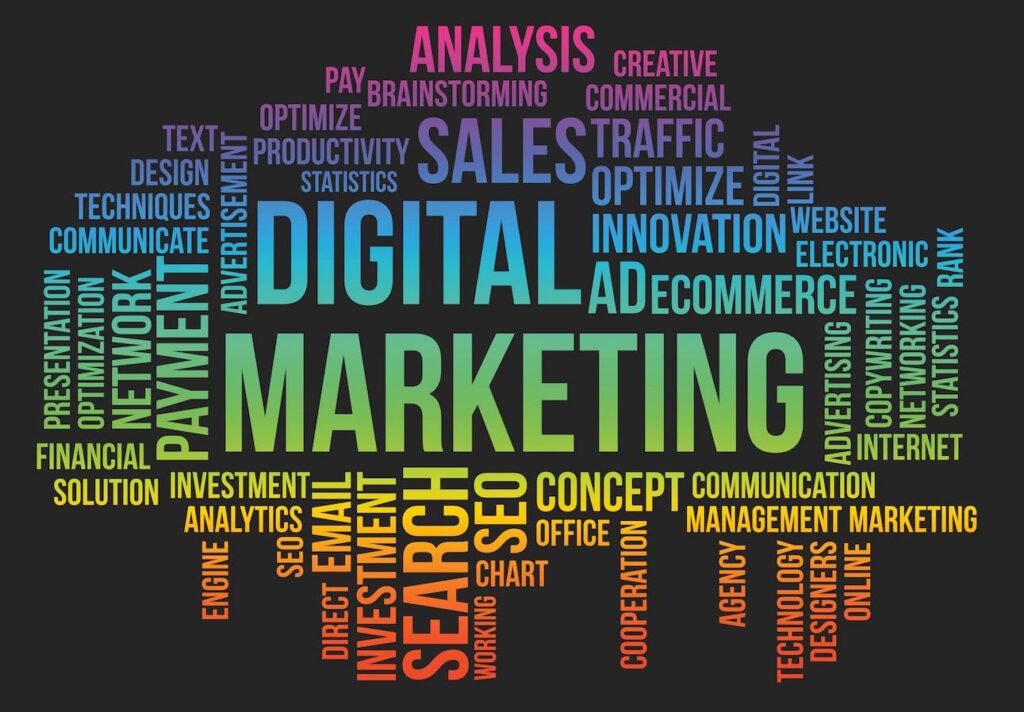* By Sarah Cornelisse
An engaging and effective online presence that includes a website and/or social media has become a vital component of the marketing strategy for the vast majority of aquaculture and agricultural businesses, especially those engaged in direct marketing. However, it is equally important to regularly audit your online presence, ensuring that the tools you are using and your approach continue to help you achieve your goals.
An engaging and effective online presence that includes a website and/or social media has become a vital component of the marketing strategy for the vast majority of aquaculture and agricultural businesses, especially those engaged in direct marketing. Seventy-one percent of small businesses had a website in 2023, and 96% use social media in their marketing strategy (Haan, 2024; Kiplangat, 2025).
Through online tools, businesses are able to connect with customers and the public, not just to advertise products, but to connect with them at a more personal level, telling your story and engaging in conversation, just as you might do in person.
A lot of emphasis is placed on developing an online or social media marketing strategy, and rightly so, due to the importance of these digital connections to marketing and business success. However, it is equally important to regularly audit your online presence, ensuring that the tools you are using and your approach continue to help you achieve your goals. Often, the use and performance of online tools are reviewed individually.
However, an online, or digital, marketing audit is comprehensive, looking at your presence across all platforms. As described by Heinrich, “A digital marketing audit is a thorough, objective evaluation of an organization’s marketing strategies. It assesses marketing activities’ effectiveness, relevance, and alignment with business goals and surfaces opportunities for improvement” (2025).

A strong online marketing audit begins with a review of your marketing goals for your online presence. For instance, do goals include growing brand awareness, improving customer engagement, increasing product sales quantity, or revenue? Your audit findings should allow you to assess whether the platforms you are using are aligned with your goals. Be sure to include all aspects of your business’s online marketing presence in your audit. This should include:
» Website (including online store).
» Social media platforms (Facebook, Instagram, TikTok, YouTube, etc.).
» Email list and newsletter.
» Google business profile.
» Third-party review sites (Yelp, etc.).
» Online directories (Chamber of Commerce, Visitors Bureau, etc.).
Start your audit by reviewing the accuracy of information such as contact information, business hours, and links to your website, online store, or social media. Following this, take into account your use of each online tool. For instance, are you routinely using each social media platform that your business is on? How often are you posting or using other features (Stories, Reels, boosted posts, etc.)? Are you responding to customer reviews? Analytical data gathered by the tools used is valuable for uncovering the effectiveness of your current actions.
Study performance data such as open rate, click-through rates, signups, likes, shares, number or value of purchases, and other quantitative information.
Finally, assess qualitative aspects of your online marketing presence. This includes things such as ease and clarity of website and/or online store navigation and accessibility, brand voice, and messaging. Data provided by social media tools allows you to assess the level and quality of engagement with your audience, while Google Analytics data can provide insight into the user experience of your website and online store.

One aspect of your online presence that bears specific mention is brand consistency. Since online marketing tools did not become available at the same time, and each has evolved differently since its launch, it stands to reason that you likely integrated the use of individual tools at different times. Or perhaps different people within your business are responsible for managing different tools, such as one person being responsible for your website, online store, Google profile, and review sites, while another is responsible for managing your social media platforms and email newsletter.
Either scenario can lead to inconsistent branding across platforms that make up your online presence. Specific things to look at during an audit include logo, business name, visual identity elements (photos, colors, fonts), and your core messages and tone across platforms.
Be sure to keep in mind the marketing funnel or customer journey when assessing your online marketing presence. How effectively does information and content connect with customers, and how easily are they able to engage and interact with you? It is often the small things, such as how quickly a website loads, that will determine whether a customer moves from awareness to decision, that is, making a purchase.
Once your audit is complete, it is important to act on your findings. You should have a list of areas for improvement, along with things that are working successfully. Building on what is effective, create a list of short and long-term improvements that you will implement. For example, through your audit, you may determine that your presence on Instagram is not driving the results you desire but that your YouTube videos are achieving high reach and engagement, leading you to decide to mothball your business’s Instagram account and increase your focus on developing YouTube videos that can also be shared on your website, through other social media platforms, and your email newsletter.
It is often recommended that audits take place annually or when a problem is identified or brought to your attention. However, there are other events that may lead you to perform an online presence audit. These include:
» Changes to the business, such as rebranding or new product/service offerings.
» Changes in strategy in response to market changes.
» Personnel changes, such as hiring a marketing consultant.
Whatever triggers an audit of your business’s online presence, be intentional and thorough during the process. Your business’s online presence may be the first impression customers or the public get of your business. Your goal through an audit is to ensure that your business has an accurate and consistent presence across all platforms and outlets being used. An online marketing audit will allow you to:
» Improve your understanding of current performance.
» Determine where improvements can be made.
» Ensure actions align with goals.
» Identify opportunities.
Performed routinely, online marketing presence audits will allow you to enhance your online presence, attracting new customers and strengthening connections with existing ones.
Disclaimer: Where individual or trade names appear, no discrimination is intended, and no endorsement by Penn State Extension is implied. References and sources consulted by the author on the elaboration of this article are available under previous request to our editorial staff.

* Sarah Cornelisse is a Senior Extension Associate of agricultural entrepreneurship and business management at Penn State University in the Department of Agricultural Economics, Sociology and Education. Sarah has expertise in direct marketing, value-added dairy entrepreneurship and marketing, the use of digital and social media for agricultural farm and food business marketing, and business and marketing planning and decision making. Originally from New York State, she has a B.A in Mathematics from the State University of New York at Geneseo, and M.S. degrees in Agricultural Economics and Animal Science, both from Penn State University. Correspondence email: sar243@psu.edu










